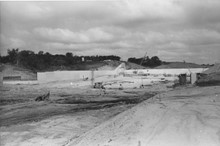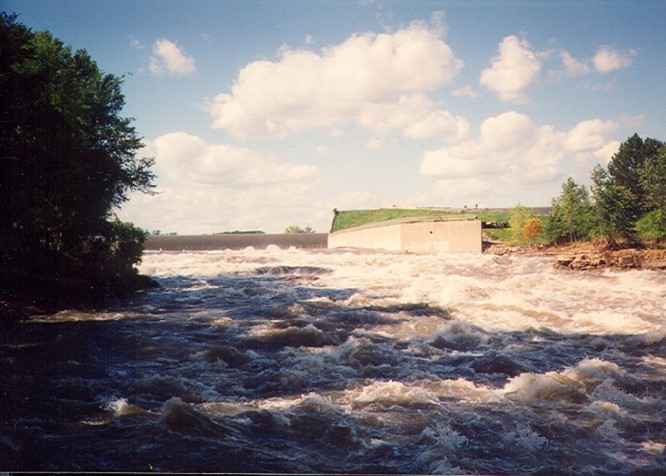The Iowa River is one of several southeastern flowing streams that drain the eastern one-half of Iowa to join the Mississippi River along the state's eastern boundary. Record floods that swept the nation in the early 1930's prompted Congress to establish the Flood Control Act of 1938. In an attempt to reduce flooding on the Mississippi River, the U.S. Army Corps of Engineers was authorized to construct several dams on tributary rivers, including the Iowa River. In addition to moderating stream flows on the Iowa River, Coralville Lake's less evident, but equally important role, is in the comprehensive flood control system for the Mississippi River.

At a location several miles upstream from Iowa City, construction of the dam began in 1949, was delayed by the Korean Conflict, and was finally completed in 1958. Coralville Dam regulates runoff from 3,084 square miles of land upstream providing flood protection to 1,703 square miles of Iowa River Valley below the dam. During drought conditions, water stored in the lake is released at a minimum rate of 150 cubic feet per second (cfs) to provide a sufficient flow to meet downstream domestic and industrial water needs.
The Coralville Dam is 1,400 feet long and 100 feet high. An emergency spillway, 500 feet wide, was connected to the dam at the western end to allow for the release of any flow that exceeds the capacity of the dam's outlet gates or the reservoir itself. The lip of the spillway is 31 feet below the top of the dam, at an elevation of 712 feet above sea level.
 The U.S. Army Corps of Engineers has a tradition of naming a dam or lake after the first town downstream from the dam. The city of Coralville is the first town downstream from the dam on the Iowa River, therefore the name, Coralville Lake. Naming of the town goes back to 1866 when famous naturalist Professor Louis Agassiz traveled to the end of the rail line and then, before lecturing on his theory of multiple glaciations, first drew attention to “the ancient fossilized coral reefs of the Iowa City area” that were discovered while digging a foundation for a mill. The town then decided to call itself Coralville.
The U.S. Army Corps of Engineers has a tradition of naming a dam or lake after the first town downstream from the dam. The city of Coralville is the first town downstream from the dam on the Iowa River, therefore the name, Coralville Lake. Naming of the town goes back to 1866 when famous naturalist Professor Louis Agassiz traveled to the end of the rail line and then, before lecturing on his theory of multiple glaciations, first drew attention to “the ancient fossilized coral reefs of the Iowa City area” that were discovered while digging a foundation for a mill. The town then decided to call itself Coralville.
The U.S. Army Corps of Engineers manages Coralville Lake as a multiple use project providing primary benefits in flood control and low flow augmentation. Secondary benefits include recreation, fish and wildlife management, forest management and water quality improvement.

During the Floods of 1993, a unique area was exposed. This area is called the Devonian Fossil Gorge. This unique limestone exposure has an informational Entry Plaza directly south of the spillway. Fossils estimated at 365 million years old were uncovered by the floodwaters. Specimens of corals, brachiopods and crinoids are common.
For the second time in the history of the dam, the spillway was again overtopped on June 10, 2008. The Devonian Fossil Gorge was scoured out once more and new fossils were revealed.